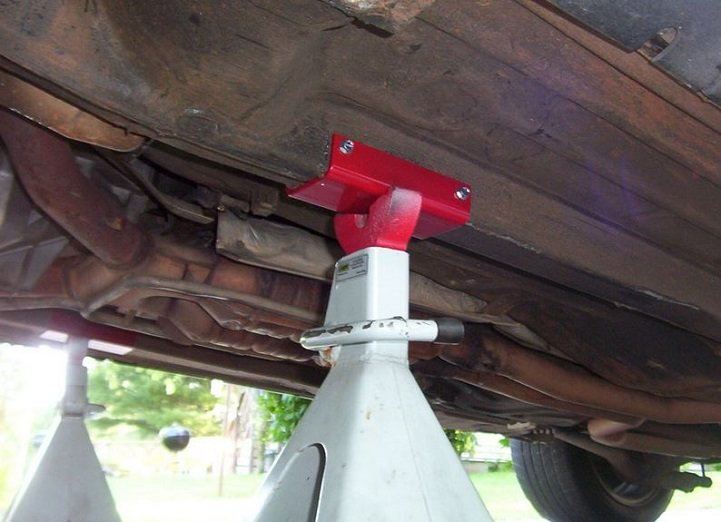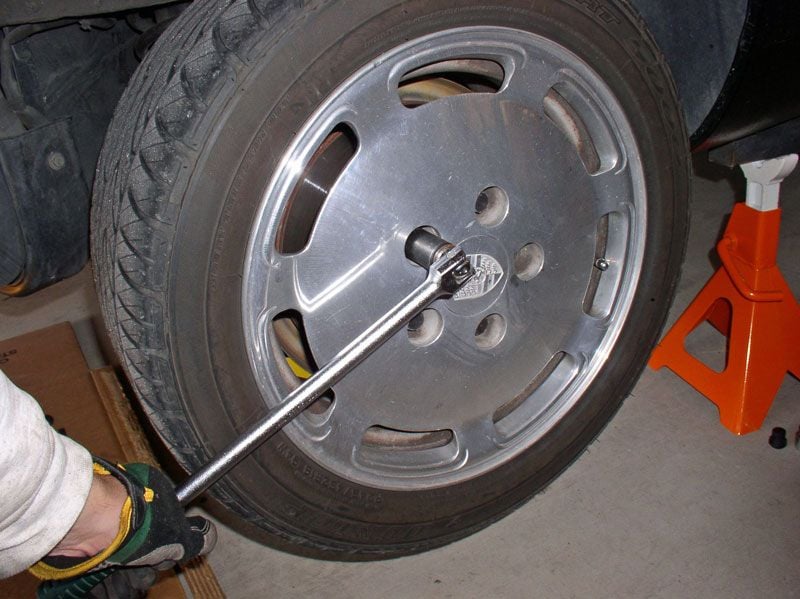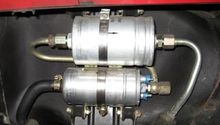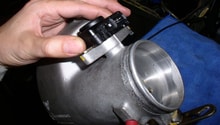Porsche 928: How to Replace Fuel Filter
Replacing the fuel filter in your Porsche 928 is a fun maintenance task that you can do at home. It's fairly inexpensive, requires basic tools, and can be done in less than 30 minutes.
This article applies to the Porsche 928 (1979-1995).
If there’s one thing the owners of Porsche 928s like to do, it’s work on their car. One of the more enjoyable DIY tasks to do is replacing the vehicle’s fuel filter. It’s a fairly quick and simple procedure, but it involves working with the engine. Fuel filters often become clogged due to dirt or rust in the fuel tank and the debris that naturally occurs over time from the fuel line. The job of the fuel filter is to keep all of these contaminates out of the engine. On average, it’s best to replace a fuel filter once a year, especially if you drive the car regularly, use cheap gas, or drive on gravel or other surfaces that could clog it. From a “how many miles” perspective, a good ballpark range for replacement is 30,000 miles.

Materials Needed
- Philips screwdriver
- Jack and jack stands
- Lug nut wrench
- 3/4" wrench
- Bowl or bucket
- Towel or rag
- Goggles and gloves
Pro Tips
- No matter how careful you may be during this chore, you will likely leak fuel at some point. It could be a few drips or a quick spray. Before you do anything, disconnect the vehicle’s battery because gas plus sparks equals a bad time.
- Due to the fact that fuel will be dispensed, make sure you’re working in a well-ventilated environment. Outdoors is best, but if you’re in the garage, make sure the unit’s door is open, or at least its windows.
- In terms of performing the actual fuel injector replacement, make sure to wear goggles (to avoid getting fuel in your eyes), as well as gloves. Regarding the latter garment, in particular, make sure they’re not the type that disintegrate when exposed to gasoline (cloth would be best).
- Once gas gets on the skin, it’ll be a while before the smell goes away.
- Speaking of protection against fuel exposure, you’ll also want to get a bowl or bucket to catch any fuel that comes out. Prevent it from dripping onto the floor of your garage or driveway.
Step 1 – Disconnect the battery and elevate the car
Disconnect the negative battery terminal before raising the car.
The fuel filter is located by the rear passenger side of the car. In order to access it, you’ll need to elevate the car. Lift the car using the jack, and once the car is high enough, wiggle the vehicle to ensure it’s resting securely.
(Related Article: Porsche 928: How to Jack Up Your Car - Rennlist.com)

Step 2 – Remove the rear passenger wheel
This will allow for easier access to fuel filter. Loosen wheel nuts using lug wrench. Turn counterclockwise until nuts are removed. Place nuts in a spot where they won’t be misplaced.
(Related Article: Porsche 928: How to Change a Tire - Rennlist.com)

Step 3 – Remove the access panel and loosen filter nut
The access panel is located near the front of the car, on the passenger side rear wheel well; it is secured by two nuts. Once panel is removed, loosen the filter’s nut while holding its “inner nut;” remove lower hose and catch escaping fuel in a suitable container.

Figure 3. Access panel location. 
Figure 4. Location of filter nuts.
Step 4 – Loosen fuel pump’s restraining strap and nuts
Do this once all the fuel is clear from the line (Step 3). Then, loosen the “lock” nut while holding the “inner nut” of the fuel filter and unscrew the filter from the rigid pipe you see between the filter and fuel accumulator. It's important to counter-hold the fittings on the two nuts. Again, catch all escaping fuel.

Figure 5. Restraining strap indicated. 
Figure 6. Loosening nuts.
Pro Tip
You can go to an auto parts store and purchase line clamps with smooth, round jaws that can be used to clamp off rubber fuel lines to prevent fuel flow. This will minimize the amount of fuel that escapes through these hoses.
Step 5 – Remove filter and insert replacement
Discard old filter and confirm replacement filter is secure.
Step 6 – Screw the filter back to the pipe between the filter and fuel accumulator
Tighten restraining strap, replace lower hose, and replace access panel. You are basically reversing the “opening up” process.
Step 7 – Re-attach wheel and replace lug nuts
Tighten nuts by turning clockwise.
Step 8 – Lower car back to ground
Once car is safely back on the ground, check the nuts again to ensure they’re on tight. Once done, the car will take a few seconds of turning over before starting as fuel fills the system again.
Pro Tips
- Remember to counter-hold every connection (two wrenches, one to loosen and one to keep from twisting the connection).
- Use one wrench to tighten and one to hold — if you tighten a line with a twist in the metal lines, the connection will loosen in a few days.
- Make sure the sealing rings are all back in the right places.
- Make absolute certain the filter and lines are all back in their correct, natural orientations, and that none of the lines touch the body (if a line touches the body, the pump will be very noisy).
Related Discussions
- Changing Fuel Filter - Rennlist.com
- Fuel Filter Replacement - Rennlist.com






